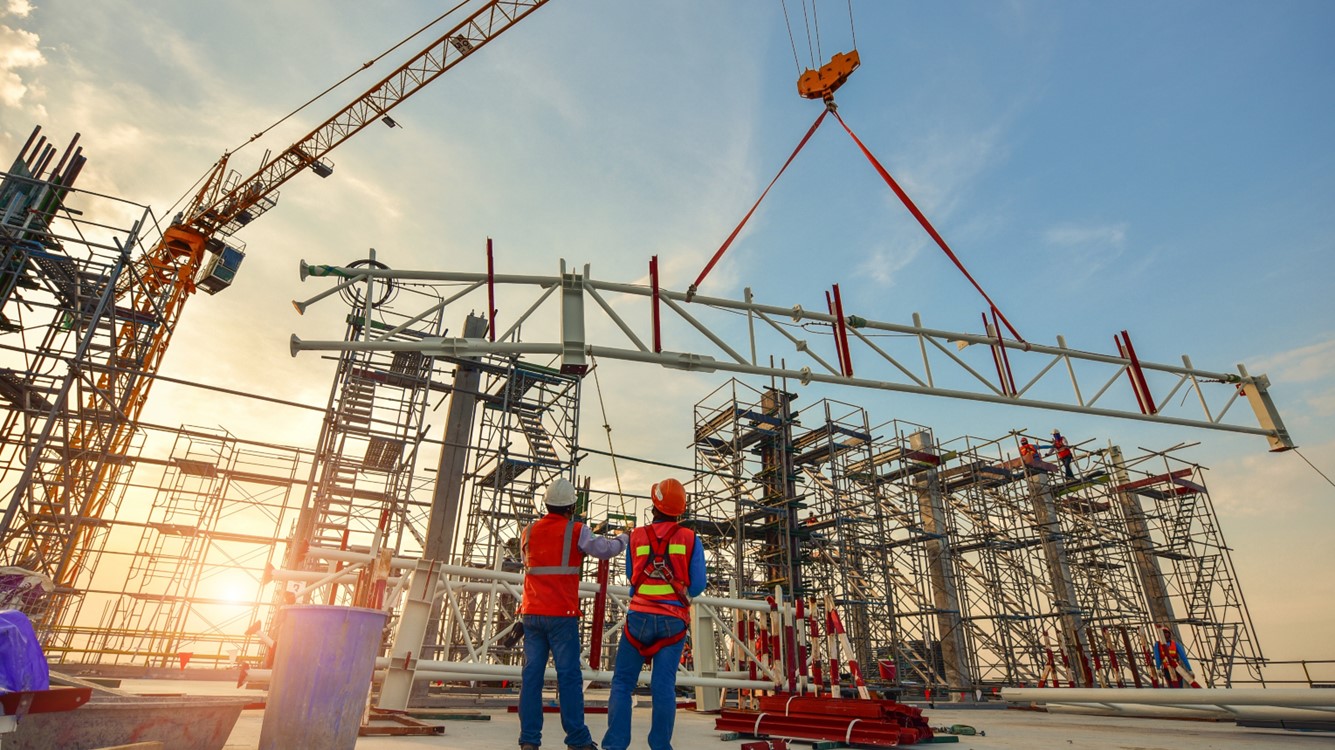Construction spending lost ground in June
Materials cost inflation has cooled significantly.

August 1, 2024
Construction spending slumped 0.3% in June after May spending was revised higher. Spending in the month was 6.2% higher than a year ago, totaling $2.15 trillion. Spending is captured in nominal dollars, which also reflect changes in prices. Input costs rose 1.8% over the same period while average hourly earnings for nonsupervisory construction workers jumped 4.5%. Materials cost inflation has cooled significantly over the past few months; however, labor shortages remain. The unemployment rate for construction workers hit 3.3% in June (the overall unemployment rate rose to 4.1% in the month), while the number of unemployed construction workers fell to the lowest level for June in 25 years.
Private residential construction spending fell 0.3% in the month, driven entirely by a 1.2% slowdown in single-family construction. Multifamily construction eked out a 0.1% gain. Residential construction has been sputtering in the face of still-high interest rates, which sidelines many would-be buyers. As expectations for a cut in interest rates grow, so do expectations for a rebound in housing activity. Pent-up demand meeting still-low supply will provide a boost to builders when rates start to fall.
Private nonresidential construction spending slumped 0.1% on lower commercial, healthcare, religious and power infrastructure spending. Manufacturing grew 0.1% in June to another record high, a rise of 19.1% compared to a year ago. Manufacturing has been dominated by a fifteen-times surge in the construction of computer, electrical and electronic plants (chip plants) since 2022, when federal incentives were passed.
The series now has data center construction broken out separately, which shows a surge in spending started in 2022, slightly before generative artificial intelligence (GenAI) software programs were first announced. The expectation is that data center construction will only continue to grow as GenAI becomes more ubiquitous. All this computing power needs a resilient electric grid. Private spending on power generation fell 0.6% in the month but was up 11.7% compared to a year ago. In 2023, spending on power generation from solar, geothermal and other renewables (excluding wind) jumped 26% from a year ago and 120% since 2020. More is expected in 2024.
Public construction spending declined 0.4% as all levels of government spending on construction fell. The largest category of spending, highway and street construction, fell 0.4%. Lower state and local government revenues this fiscal year have hampered the ability to ramp up projects. Most states’ fiscal years end in June.
Infrastructure and manufacturing spending have given construction a boost.
Yelena Maleyev, KPMG Senior Economist
Bottom Line
Infrastructure and manufacturing spending have given construction a boost, but weaker public and residential spending have pushed overall construction activity to fall for two consecutive months. Two interest rate cuts in 2024 will help free up sidelined buyers to reenter the housing market. Any upside surprises to inflation will push the Federal Reserve to delay cuts, which would delay the rebound in the housing market.
Explore more

Construction spending is slowing
Millennial demand will boost future construction.

KPMG Economics
A source for unbiased economic intelligence to help improve strategic decision-making.

Housing starts tumble
Labor, land and materials shortages remain.
Subscribe to insights from KPMG Economics
KPMG Economics distributes a wide selection of insight and analysis to help businesses make informed decisions.
Meet our team

